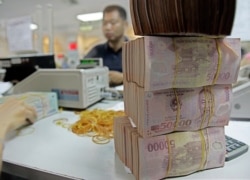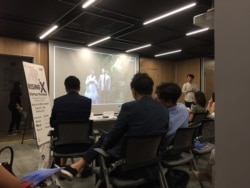Foreign tourists normally pour into Vietnam to see colonial architecture and limestone jutting out of the sea. Now some are headed to Vietnam’s clinics and hospitals. They’re part of Asia’s latest medical tourism industry.
Vietnamese officials hope medical tourists will emerge from the threefold increase in arrivals between 2010 and 2018. The key attractions: dentists and cosmetic surgery.
Vietnam’s political stability, affordability of healthcare and the relatively high quality of certain types of medicine are driving the incipient trend already, country analysts say. Vietnam stands to join Asian peers such as Singapore, Thailand and Taiwan as magnets for medical tourism, yet charge less.
“I do see a trend of people coming here. It is cheaper to get things done here than it is in Thailand and definitely Singapore,” said Mike Lynch, managing director with SSI Institutional Brokerage in Ho Chi Minh City. “The biggest group is cosmetic surgery. There’s a lot of it going on here.”
Money maker for Vietnam
More than 80,000 foreigners have traveled to Vietnam so far for medical “examinations and treatments” the government-run Vietnam Investment Review news website says, and they contributed combined income of more than $1 billion. The country’s medical sector grows 18% to 20% per cent every year, the website adds.
Business consultancy Dezan Shira & Associates places the 2017 revenue alone at $2 billion. “Vietnam is emerging as a key player in Southeast Asia’s medical tourism industry,” the consultancy says.
Tran Quoc Bao, the planning and marketing director at City International Hospital in Ho Chi Minh City, told a regional conference earlier this year that Vietnam was a “preferred hub for healthcare and wellness services”, the investment review says.
Revenue from Singapore and Thailand suggest that medical tourism pays. The Tourism Authority of Thailand anticipated 26 billion baht ($860 million) in gross medical tourism revenue last year, up 14% over 2017, Thai media report. Singapore’s medical tourism revenue grew at a 10% compound annual growth rate in the to 2017, when it stood at $1 billion Singapore dollars ($737 million), online magazine Healthcare Asia says.
Medical tourism generates at least one-third of private hospital revenue in most Southeast Asian countries, and the Asia Pacific was the world’s biggest medical tourism market as of 2017, Zion Market Research has found, as cited by the travel news website TTG Asia.
Tourism boom
Between 2010 and 2018, the number of foreign tourists in Vietnam grew from 5 million to more than 15 million.
General Statistics Office data show that more than 2.8 million Chinese tourists visited Vietnam from January through July this year and the number of South Korean tourists rose 22% over a period against the same span of 2018 to more than 2.4 million arrivals. China and South Korea are the top two sources of tourism.
In coastal vacation spots frequented by these tourists – the likes of Phu Quoc and Da Nang -- resorts have “tried to integrate facilities to make them more suitable for medical tourism”, Dezan Shira says.
Dentistry is attracting Australians in “droves” as cosmetic surgery draws South Koreans, said Ralf Matthaes, founder of the Infocus Mekong Research consultancy in Ho Chi Minh City. Some of the dentists studied overseas and returned to Vietnam for work, he said. Resident Koreans are among the cosmetic surgeons.
Dental work costs one-tenth of the prices asked in North America and the quality of doctors is slowly picking up, Lynch said. Regional medical service firms will eventually set up offices in Vietnam if not there already, he forecast.
Risks and opportunities
Singapore, Taiwan and Thailand still have a better reputation for general healthcare. In Thailand, for example, foreigners visit hospitals for full-blown checkups that test for tumors, blood sugar and any cardiovascular problems.
Matthaes, a Vietnam dweller of 25 years, warned against hospital care in Vietnam. He said doctors put in the “wrong hardware” after he broke a leg and that successful medical malpractice lawsuits are rare.
“I would say it’s spotty at best, but if it comes to dental, and if it comes to plastic surgery, yes,” he said.
Paying extra can reduce risk and add comfort, yet a bill often still comes in below what patients would pay in a more developed country.
American energy consultant John Rockhold, 67, said his wife stayed in a hospital for four days to give birth.
“To me things have really improved,” said Rockhold, a Vietnam War veteran. “We’ve had our children here. My wife had to have a caesarian and we stayed in one of the international hospitals. I paid for the extra to have a suite. My mother in- law could stay with her, and she could order from five or six different restaurants. She was in there like four days and I got a bill of $1,200.”








